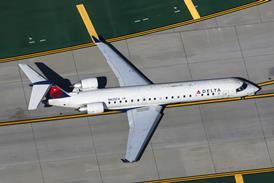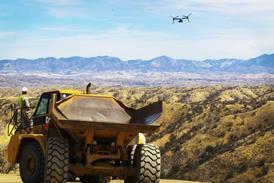MIKE GERZANICS / ORANGE COUNTY, CALIFORNIA
Controlled flight into terrain (CFIT) is a continuing problem area for aviation safety. Many CFIT accidents occur in the approach-and-landing phase - and non-precision approaches, those without glidepath guidance, are the most troublesome.
Weather is a factor, as the ceiling and visibility required are typically higher than for precision approaches. But increased pilot workload is also a crucial factor in the high accident rate for non-precision approaches.
On a precision approach, the aircraft is configured for landing, and is at the desired approach reference speed at glideslope intercept. Apart from a slight power reduction to keep airspeed under control down the glidepath, little pilot action is required to complete the final phase of the approach.
At the decision height, the pilot either sees the runway and lands, or executes a missed approach. If the runway is visible, the pilot continues down the 3° glidepath without any change in aircraft pitch attitude or power setting until the flare is initiated.
A non-precision approach is more complicated, as it usually involves a stair-step descent profile. It begins with the aircraft level at approach reference speed and configured for landing at the final-approach fix - the point at which a descent to the minimum descent altitude (MDA) is initiated. The pilot must reduce pitch attitude and power to establish the descent.
The rate of descent must be high enough to ensure the aircraft reaches the MDA sufficiently far from the runway so that a normal 3° visual glidepath can be intercepted and flown to touchdown.
The point at which the glidepath intercepts the MDA is called the visual descent point (VDP). Reaching the MDA before the VDP requires the pilot to level the aircraft off, another pitch and power manoeuvre. If the runway is seen at the VDP, the pilot can make a visual descent to landing. If not, the pilot can continue level flight at the MDA and look for the runway until reaching the missed approach point. Once past the VDP, however, a steepening final approach segment is required. This may result in a high descent-rate approach at idle power, which can be unsafe for large turbofan-powered aircraft.
Automatic flight-control systems have reduced pilot workload in some areas. Using the area-navigation (RNAV) capability provided by a flight management system (FMS), the lateral navigation (LNAV) mode of an autoflight system can accurately track even the most complicated approach procedure. But using the autopilot to step down to each altitude on a non-precision approach is a far less automated process, requiring numerous switch actions and extensive co-ordination between pilot and co-pilot.
Typical errors on a step-down non-precision approach include: failing to set the correct next-descent altitude on the flight-guidance system; not initiating a descent on time; and descending at the wrong point in an approach. These could all cause a CFIT accident.
While evaluating the Rockwell Collins Continuum avionics, I was able to fly a global approach to runway 24 at Carlsbad, California. The LNAV autoflight mode was used to follow the non-precision approach's ground track, while descent from the final approach fix to the decision altitude (DA) was via an FMS-generated 3.2° glidepath. Using this vertical navigation (VNAV) glidepath to descend on a non-precision approach greatly enhances the simplicity and safety of the procedure.
VNAV allowed us to use a DA of 740ft (230m) above mean sea level (414ft above ground level), significantly lower than the MDA of 1,660ft had a conventional step-down approach been flown. Ceiling and visibility minima for the LNAV/VNAV approach were also much lower, an obvious benefit in poor weather conditions.
How the final-approach phase was flown gave an even greater advantage. The autoflight system followed the LNAV/VNAV guidance, as it would have an instrument landing system (ILS). Workload during the final approach phase was low, as there was no need to descend to and level off at the MDA before the VDP. The aircraft smoothly tracked runaway centreline and glidepath throughout the approach.
As we were in visual conditions, I let the autopilot continue the descent past the DA. Just before disengaging the autopilot at 80ft, it appeared the aircraft would squarely hit the runway's touchdown markers. Rather than continue to a landing, I manually executed a go-around and followed the FMS's LNAV guidance for the missed-approach procedure. The VNAV glidepath capability demonstrated on the approach to Carlsbad was impressive.
The vast majority of airports do not have a precision-approach procedure. An RNAV non-precision straight-in approach flown to VNAV minima can allow operations into those fields in near-precision approach weather conditions. Flight safety is thus greatly enhanced, as pilots no longer have to fly a complicated step-down descent profile.
Flying an RNAV approach using a VNAV descent profile is as easy as flying an ILS. As the number of aircraft capable of making these approaches increases, there should be a corresponding fall in the number of CFIT accidents during the landing phase.
Source: Flight International























